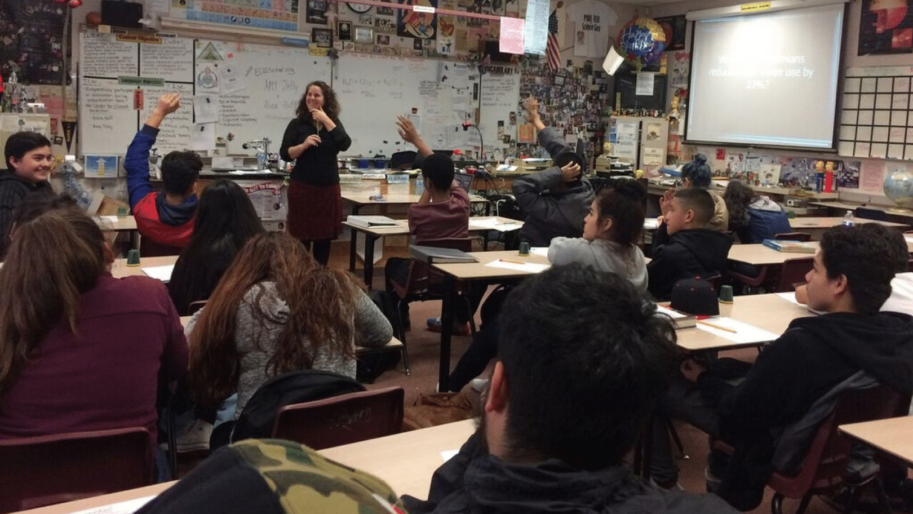With the recent March for Science as well as the threats to climate research, it’s timely to assess the state of climate education. Schools are the primary venue for creating a foundation of scientific understanding and key scientific concepts, as well as an appreciation of how scientists assess evidence and reach conclusions. Youth will be critical to creating and implementing climate solutions, and will be more impacted by accelerating climate change than their predecessors. As world citizens, they must be able to engage in political discussions about climate change.
So what are they learning?
In March 2016, the National Center for Science Education published their findings on Climate Science education in the U.S.
Of the 75 percent of teachers who dedicate time to climate education, most spend two hours or less on the subject over the entire year. This not enough time to give students a deep understanding of the topic.
It also appears that many teachers themselves do not have a deep understanding of climate science. One in four teachers say they feel obligated to “give equal time” to both sides of the climate debate and one in twelve solely present a contrary view.
My personal experience aligns with this. When I first started as a climate educator seven years ago, I was told that teaching climate change was too charged a topic and that I needed to present both sides of the issue. Administrators were unclear on the difference between climate politics and climate science.
With the adoption of the Next Generation Science Standards (NGSS), education and attitudes have begun to shift. Changing standards means changes to textbooks, and this will improve teacher access to accurate climate science.
Even with access to accurate science, data can be difficult for teachers.
- Fewer than half of all teachers had any formal coursework on climate change. Some completed their formal science training before the scientific consensus about the causes of climate change solidified.
- Only one and five teachers have received professional development training on climate science.
- Misinformation is so rampant that one in three teachers endorsed the view that global warming is either mostly or equally caused by natural changes in the environment.
- Adding to the confusion, the conservative think tank, the Heartland Institute, has been distributing free copies of the book Why Scientists Disagree About Global Warming.
Some teachers avoid the controversy by allowing students to opt out of lessons or allowing parents to review lesson plans or sit in on lessons. By singling climate change out and treating it differently than other scientific findings, teachers suggest that consensus on climate change is less certain than it really is.
The climate literacy work we do in our schools through our ECO2school program is more important than ever. Students need access to accurate information through their teachers, who need support from programs like ours. If we want our young people to come out of high school and college ready to take action on the climate through their votes, purchases, and activism, we must invest in these programs right now.
